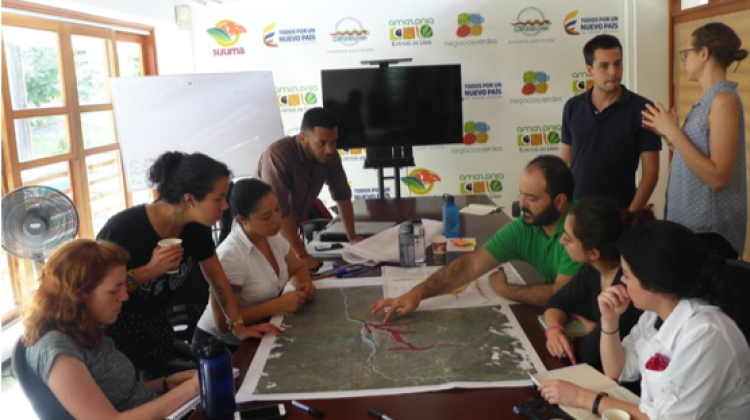Technology and Urban Planning for Natural Climate Solutions

Workshop with Corpoamazonia, Mocoa, Colombia, January 2019 via the MIT ESI Natural Climate Solutions Program website
Marco Herndon (MCP '24) is a program associate with the Natural Climate Solutions(NCS) team at the MIT Environmental Solutions Initiative (ESI). He specifically manages the team’s partnerships with organizations in Latin America — with a focus on Peru and Colombia — at the intersection of climate change, technology, and environmental planning.
To introduce Marco, we asked him three questions about his previous work in the technology space and his aspirations with the NCS team.
You spent your early career in tech — why the transition to urban planning and the ESI? What did you learn in your tech career that is relevant to your role now?
My seven years in tech focused on leveraging technology to solve complex social challenges, particularly in terms of sustainable transportation. I became interested in planning because it offered a structured and systemic approach to thinking both conceptually, as well as spatially, about challenges. I also think planning is a rare resource in a complex, under-resourced world. Although my work in tech developed sustainable transit solutions through software and partnerships, I wanted to tackle these issues with more tools to influence tangible policy changes. While completing my Master in City Planning at MIT, I learned about the ESI through a practice-based class developing planning and design proposals to improve urban biodiversity in Colombia. The approach combined technology solutions with planning frameworks, which was intriguing to me, given my background.
The skills I learned in tech that are most relevant to my work now are stakeholder management and prioritization. At a tech company, prioritization is essential to scale a product, otherwise a company risks disorganization and engineers lose focus. In planning, it is very easy to quickly become overwhelmed by the challenges communities face, especially in terms of climate change. I also learned how to operate successfully on global teams with different cultures and communication styles, which is very useful given the international scope of our work.
What keeps you optimistic about the role of tropical forests in combating climate change?
The role of tropical forests in combating climate change is indispensable. Without them, we probably don’t have much of a fighting chance to sequester and eliminate greenhouse gas emissions from the atmosphere. We also know the fate of tropical forests is interconnected with neighboring ecosystems; for example, tropical glacial melt in Peru will likely impact the volume of water in the Amazon River and its tributaries.
I try to stay optimistic for a few reasons: (1) young people in countries with tropical forests are increasingly aware and engaged in environmental issues, and (2) there is increasing consensus that the challenges facing tropical forests are global and do not fall on one country. To take just one recent example: Peru, Ecuador, Bolivia, and Brazil recently experienced terrible wildfires. We saw governments with different political ideologies share resources in the form of fire extinguishing helicopters and aid. Forests and the indigenous communities that call them home do not know geopolitical bounds. I hope that, when faced with the common challenge of climate change, governments around the world can come together and make real, tangible commitments to protecting tropical forests.
What excites you most about joining the NCS team?
I’m excited about the chance to combine technology and planning solutions to support communities vulnerable to climate change and deforestation in the Amazon. I view this work as essential to the broader climate puzzle, given that the Amazon is the largest remaining tropical forest in the world with abundant carbon sequestration and reduction potential. I also am excited about working with a new partner in Peru, which spans the second largest share of the Amazon after Brazil, which complements our experience while also offering a new focus.


